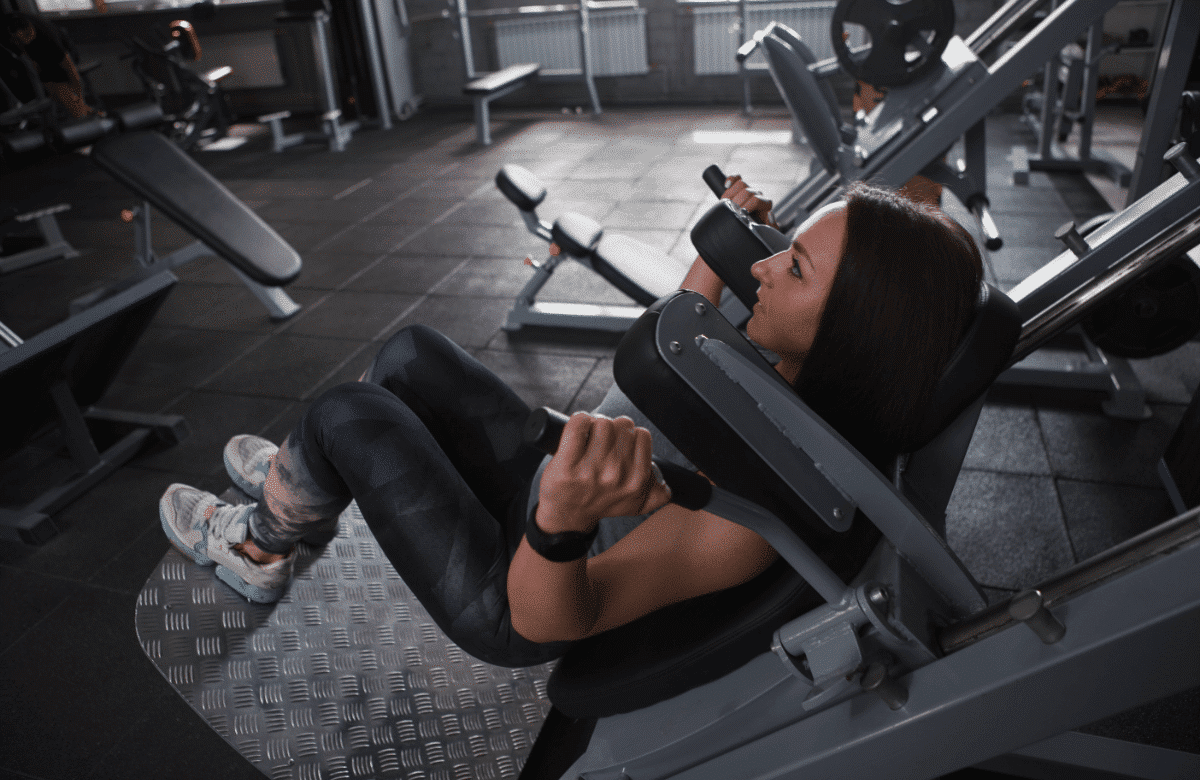Ever wondered why the hack squat is gaining so much attention in the fitness world? Delve deeper with us as we unravel the intricacies of this unique squat variation. Not only does the hack squat provide a solid foundation for building lower body strength, but it also zeroes in on those crucial lower body muscles, ensuring you get the most out of every rep.
From understanding its advantages over traditional squats to exploring the equipment used, our guide promises a comprehensive look into the world of hack squats. Whether you’re just starting out on your fitness journey or have been lifting weights for years, you’ll find value in learning how the hack squat can transform your leg training sessions and deliver remarkable results.
Jump to:
What is a Hack Squat?
The hack squat is a squatting variation performed with the weights stabilized. It looks similar to the barbell back squat, however, it takes the stability and balance concern out of the equation, emphasizing the muscles of the lower body, especially the glutes, hamstrings and quad muscles .
The hack squat is most commonly performed on:
- A hack squat machine
- A leg press machine
- A smith machine
How to Perform the Hack Squat with Perfect Form
Here is a step-by-step guide on how to perform the hack squat.

Step 1: Properly load the machine with the desired weights
If you’re a beginner, it’s best to familiarize yourself with the movement before adding plates. Stick with low weight and go for 15-20 repetitions per set.
Step 2: Starting position – Place your feet flat, shoulder-width apart
At first, you’d want to stick to the basics before experimenting with wider and narrower stances. Placing your feet shoulder width apart is ideal. Have you back touch the pad for support and your shoulder must remain stable against the shoulder pads for proper technique.
Step 3: Release the safety handles and begin the descent
Make sure you’re all set before releasing the safety handles. Take a deep breath, engage your core and start going down by pushing your hips back, keeping your whole foot on the platform, while making sure your knees are tracking over your toes. Stay upright while trying not to arch your back or lean forward. Descend until you reach a deep squat position (90-degree angle with your knee joints).
Step 4: The concentric phase
With your core engaged and in an upright position, push through the middle of your foot and extend your knees and hips until you’re standing back up.

Common Form Mistakes
Here are the most common mistakes people make when performing a hack squat :
Hack Squat Foot Placement
The most common mistake in the hack squat is placing your foot in an uncomfortable position, risking injuring your knees and lower back.
- A narrow hack squat will put more stress on the knees.
- An excessively wide stance might strain your adductors or make your knees cave inwards, possibly hurting them.
- Placing your feet further back might make your heels come off the ground, hurting your knees as well.
Familiarize yourself with the movement with shoulder width foot placement and then try out different squat variations.
Using too much weight (ego-lifting)
Another common mistake is using too much weight and lifting it with wrong technique. This is mostly observed in people who have already exercised for a couple of months, feel stronger, and want to feed their ego by going heavier and heavier.
Bomb-squatting
This is a term used when someone goes way too fast on his way down when squatting, and bounces his way up using momentum. This, not only involves a high risk for injury, but it won’t make you stronger either.
Control the weight on the way down, explode on the way up.
The origins of the hack squat
This compound exercise now widely revered for its ability to build thighs strength, owes its origins to the renowned wrestler and strongman, George Hackenschmidt. In the early days of weightlifting, Hackenschmidt introduced a novel squat position that allowed bodybuilders to handle heavy weights by hoisting a weight plate directly off the ground behind them. This technique, designed to handle heavier loads, was revolutionary at a time when the nuances of lifting heavy loads safely were still being explored.
The design not only allowed for more effective targeting of specific muscle groups but also emphasized the importance of maintaining proper form even when working with heavier loads. Over time, the benefits of this method became more evident, and more and more athletes started using this robust tool to enhance their legs’ strength.
Muscles Worked by the Hack Squat

When performing a hack squat, the muscles worked include the quadriceps, hamstrings, glutes, and even the calves, making it a highly effective compound exercise for overall lower body strength and development. It hits similar muscle groups to free-weight squats, with the difference that the hack squat does not require much core stability.
Indeed, a study published in 2020 titled ‘Evaluation of Muscle Activities During Different Squat Variations Using Electromyography Signals‘, concluded that…
EMG activities of Erector spinae and semitendinosus during Hack squat were significantly lower than all other squat variations.
This mean that the hack squat unique form engages the trunk less than all other squat variations. Thus, it is much easier to focus on form and to add heavier loads for maximum leg development.
Using different foot positions and leg placement, you can hit different angles of those muscles. For example, a wider stance will hit the glutes and adductors more, while a narrow stance will target the quads.
Hack Squat Benefits and Drawbacks
Here are the pros and cons of the hack squat :
Key benefits
- It’s easier to learn as a beginner : When doing the hack squat, your most important concern is foot placement. If you’ve got that right, few things can go wrong. The movement pattern is dictated by this piece of gym equipment, so you only need to follow along. Of course, there are some things that you need to keep an eye on, such as a tight core and your knees tracking over your toes.
- Provides a great pump and muscle hypertrophy :The hack squat is an amazing exercise for bodybuilders, but it can also be used by CrossFitters as an accessory to overload the leg muscles and get a huge pump.
- Small injury risk : This relates to the first “pro”. The hack squat is much safer than the traditional back squat. It’s nearly impossible to lose control and balance during the hack squat and get hurt.
- Great for rehabilitation and overcoming fear : Another great utility of the hack squat is its rehabilitation aspect. It is a great option for people who are recovering from an injury in the lower or upper body. They can benefit from the hack squat and transition faster to the free-weight squat. Additionally, people who fear the barbell squat and hesitate to achieve deep ranges of motion can practice with the hack squat until they feel comfortable. Hack squatting can also cure muscle imbalances as yoiu are guided throught the entire range of motion.
Drawbacks
- Lacks core development : Due to the weight not being stabilized by ourselves, the hack squat does not develop upper body stability in comparison to the back squat or front squat.
- Needs specific equipment : You can not perform the hack squat properly if you don’t have a hack squat machine or a leg press. There are some variations listed below that may help you in that case.
Hack Squat Variations
The hack squat can be performed with different techniques. Although a hack squat machine is desirable, a smith machine is also suitable. If both are inaccessible, a barbell can be used as well. Below are some variations of the hack squat.
Reverse Hack Squat
This is a variation that is performed with a hack squat machine, however, the person is facing back towards the machine. That way the muscles of the posterior chain are highly activated (glutes, hamstrings, lower back).
Narrow Hack Squat
This variation is performed with a narrow foot stance and provides different muscle activation. The quads are the main muscles worked here.
The Barbell Hack Squat
This variation is performed by holding a barbell behind your legs with straight arms. During the movement, the barbell should stay as close to your legs as possible. This variation engages the upper body and core.
Landmine Hack Squat
Have a barbell placed in a landmine and turn your back around so that the barbell rests on your upper back. This way you can greatly imitate the hack squat.
Leg Press
Leg presses are similar to the hack squat, except that your upper body is completely disengaged and your focus is placed solely on the lower body.
Hack Squat Alternatives
There is a big list of exercises that hack squats can be replaced with using the same muscle groups. Here are my favorite alternative exercises to the hack squat.
Bodyweight squat
Arguably the most basic leg exercise. No equipment is needed. Regular squats are an excellent exercise for beginners and athletes who want to improve leg strength.
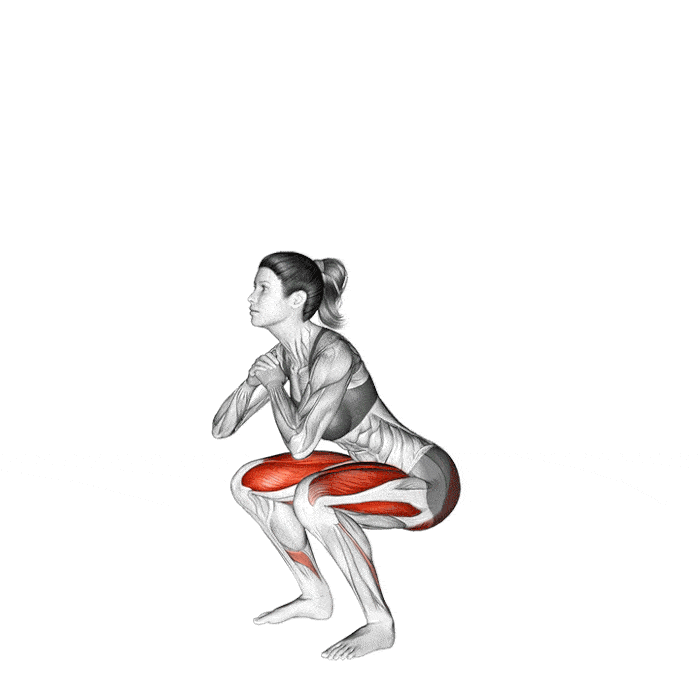
Back Squat
Alongside the deadlift, the barbell version of the squat is probably the most important exercise in a lower body workout. Activating the whole thighs, enhancing core strength (as for many other barbell exercises), working the upper back, and increasing grip strength, it provides tremendous entire body muscle mass development and greatly increases athletic performance.
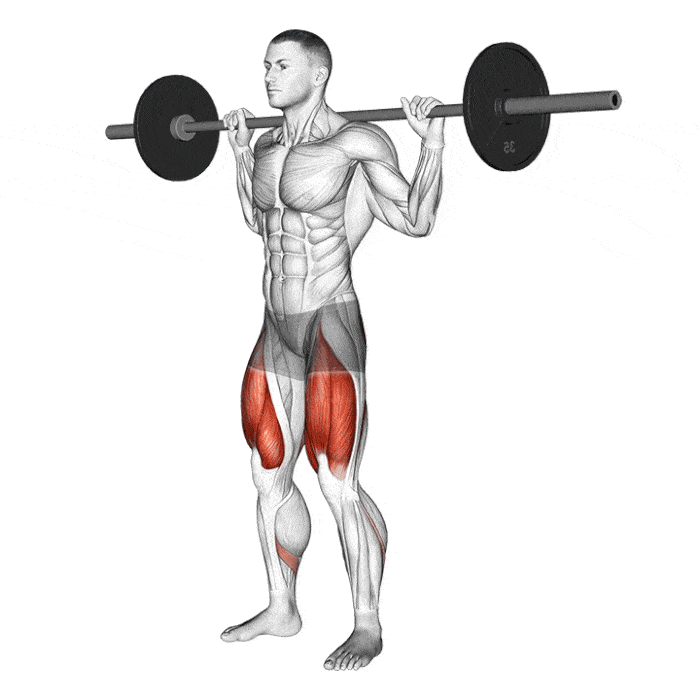
Front Squat
The Front Squat is more advanced than the other movements, its most commonly performed by Olympic Weightlifters. This squat variation puts more emphasis on the quads, upper back, and core.
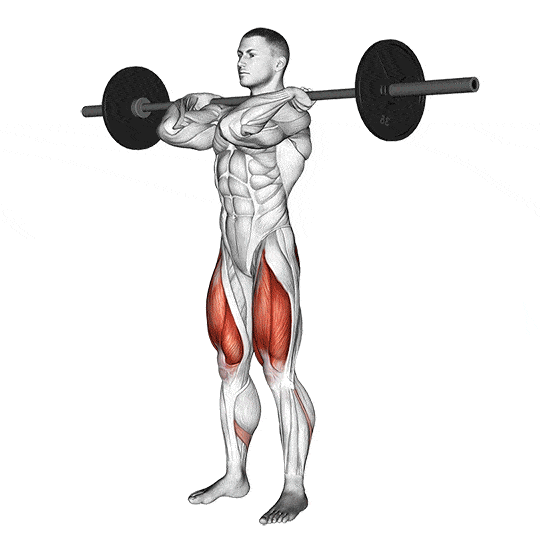
Goblet Squat
The Goblet Squat is a great introduction to free weights. Holding a lighter weight in front of your chest will act as a counterbalance, helping you maintain proper form and optimal torso angle.
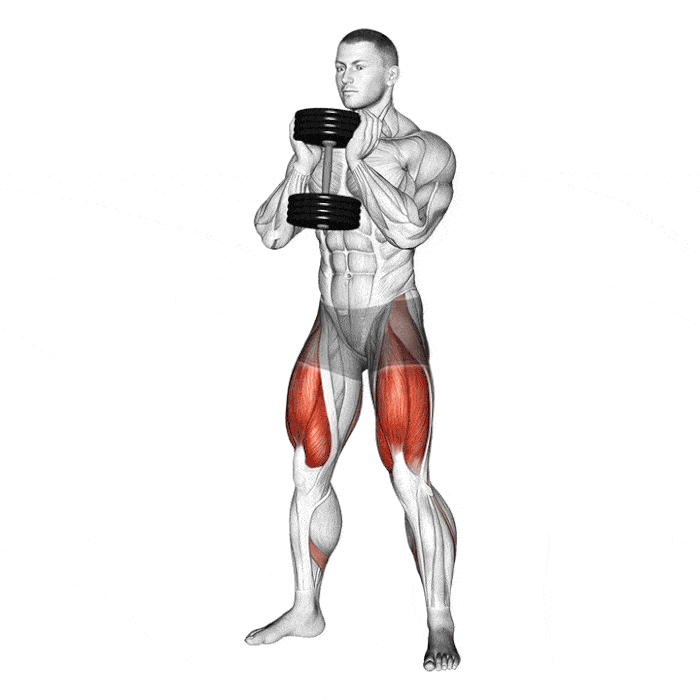
Bulgarian Split Squat
This type of squat is a unilateral lower body exercise. One leg is elevated behind you, while the weight of your body is lifted by the working leg which is placed slightly in front of you. A great exercise to correct imbalances and improve single-leg strength.
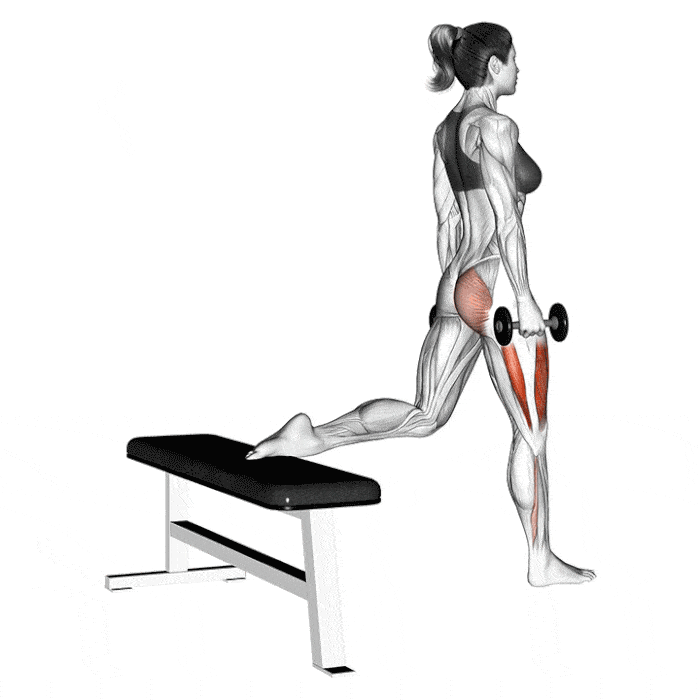
Equipment needed (if any)
The Hack Squat is most commonly performed in a hack squat machine. If you don’t have one available, the second-best option would be a smith machine or a leg press machine.
If neither of the above is available, you can try out different squat alternatives, using a barbell, kettlebells, dumbbells, medicine balls, or anything that can act as an additional weight. Bodyweight squatting is an option if no equipment is available.
Hack Squat FAQs
Is the Hack Squat better than the Back Squat
The hack squat is a machine based exercise, which means that the hack squat removes core and upper body engagement, putting more emphasis on the leg muscles. Neither is better than the other and it all comes down to what purpose you want the exercise to serve.
Can Hack Squats cause knee pain?
Hack squat knee pain can be caused by improper form or existing knee issues. To prevent discomfort, ensure your knees don’t extend past your toes and maintain a neutral spine during the exercise. Strengthening the quadriceps and surrounding muscles can also help alleviate knee pain during hack squats.
Is the Hack Squat necessary for a complete leg day exercise program?
In my opinion, the hack squat is a supplementary exercise and should be used mostly by bodybuilders who want to target the leg muscles and achieve hypertrophy. People who cannot perform bodyweight exercises due to injury or other reasons can also benefit from the hack squat.
How to Hack Squat with no Hack Squat machine?
If you don’t have access to a Hack Squat machine, you can use a smith machine or a leg press machine for a similar muscle stimulus. Otherwise, you can try some of the alternatives mentioned above.
Is the Hack Squat good for athletes?
When playing sports, you’re using muscles throughout the whole body to achieve your goal. The Hack Squat removes the core and upper body from the movement, emphasizing on the legs. To increase athletic performance it’s best to do free-weight squats.
What’s a Good Hack Squat Starting Weight?
A hack squat starting weight should be determined based on an individual’s strength and experience level. It is recommended to start with a weight that allows proper form and technique, gradually increasing the load as strength improves.



